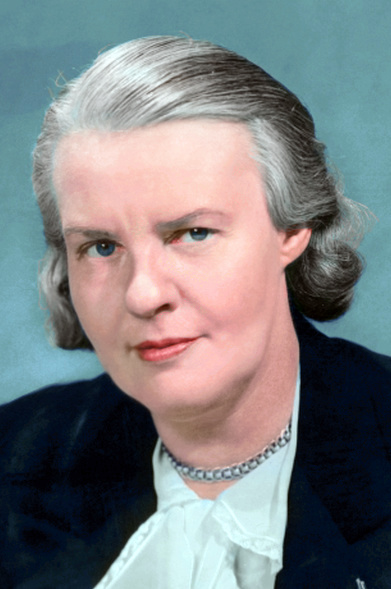The Evening Star (April 24, 1946)

ON THE RECORD —
The OPA and American habits
By Dorothy Thompson
The difficulties of the OPA lie in American consumption habits. The OPA is trying to keep down food prices, while the American people are living on a scale unique in extravagance and madness.
Last year, the national income was $161 billion. Thirty-one billions or approximately 19 percent of that was spent on food. That does not seem an exorbitant proportion of income to expend on the prime necessity of life.
But on what kind of food did the people spend their money?
Over most of the globe the staff of life is bread; the overwhelming majority of mankind lives on cereals and a limited amount of fats. For lack of these a quarter of the world faces famine.
But of the 31 billions spent for food, between five and six billions went for meat.
All food figures include nonalcoholic beverages. Last year the American people spent approximately two billion dollars for soda pop. My estimate is based on a round figure of 18 billion bottles averaging 10 cents, plus an inestimable amount of beverages not included in available figures because they contain less sugar than these, or sugar substitutes.
The American people ate, last year, over one billion dollars’ worth of ice cream; they consumed three-quarters of a billion dollars’ worth of coffee – counted not on what they spent per cup in restaurants, but on actual sales of coffee. They ate nearly half a billion dollars’ worth of candy. In short, within the 31 billions spent for food – the 19 percent of the national income – must be counted over four billions spent on soft drinks, coffee, commercial ice cream and candy, or 13 percent of the total cost of their food.
![]()
They also swallowed 7.3 billion dollars’ worth of alcoholic beverages, of which by far the largest amount was whisky.
In 1939, the American people spent $15 billion on food. In 1945, they spent $11.5 million on alcohol, soft drinks, ice cream, candy and coffee, or more than 70 percent of their total food expenditures for 1939.
Now, it is quite futile to argue that the increased expenditures for food are due to the increased cost of living.
Food expenditures have gone up more than 100 percent, and the cost of food has not risen more than 40 percent – according to OPA statistics. Present estimates are that in the current year Americans will consume nearly $34 billion worth of food. Americans have fits if the price of butter goes above celling of 57 cents per pound, but they buy over a billion dollars’ worth of ice cream, which retails at from 60 to 70 cents a quart, the chief and only costly ingredient of which is butter fat, a quart of ice cream containing in the
average commercial product – only 1/10 of a pound.
The farmers are not hijacking this country. Nineteen percent of our people live on farms, and they get 13 percent of the income, and work harder than anyone else.
Americans are not overspending on essential foods, even according to an American standard – meat, vegetables, cereals, milk and fruits. They are buying in disproportionate quantities the most expensive foods of all, and in large part those foods which are least healthful, in the quantities consumed, or contain no nutriment to speak of. Americans spent between five and six billions last year for meat. But they spent $2.7 billion for tobacco. On tobacco and alcoholic beverages they spent almost twice as much as their meat bill.
American women spent last year on beauty parlors and cosmetics nearly two billion dollars. Americans spent a billion and a half dollars on movies. Actually, the sum total of what they spent on movies, cosmetics, beauty treatments, alcohol, tobacco and soda pop is equal to 50 percent of their total food costs, including candy, coffee and ice cream.
![]()
Furthermore, it is precisely in these categories that they are overcharged. The price of cosmetics is ridiculous in comparison to the cost of production. Why an American should pay 60 cents for a ticket to see a five-year-old film only can be explained by the astronomical waste and preposterous salaries paid by Hollywood and passed on to the consumer. There are movie stars who pull in four times the salary of the president of the United States, and writers sitting on payrolls at $1,000 a week who couldn’t earn a third of that in any other form of writing. But the people pay. Forty-six cents a pound, the ceiling price for sirloin steak (try to get it) is preposterous compared with the dollar that millions of women will spend for 10 cents’ worth of face powder.
And if present ceiling prices are to be maintained on meat, what about the restaurants who charge $7 for $1.38 worth of steak at the market ceiling prices?
The truth is we are an extravagant people. We want price controls on essential foods that cost more than the price to produce, in order that we can blow in our cash on stuff which is not good for our health, on amusements, and on “glamour,” which has become the substitute for attractiveness. The average expenditure in this country for “beauty” (not for art) – and excluding toilet soap – averages $3 a month for every female over the age of 14.